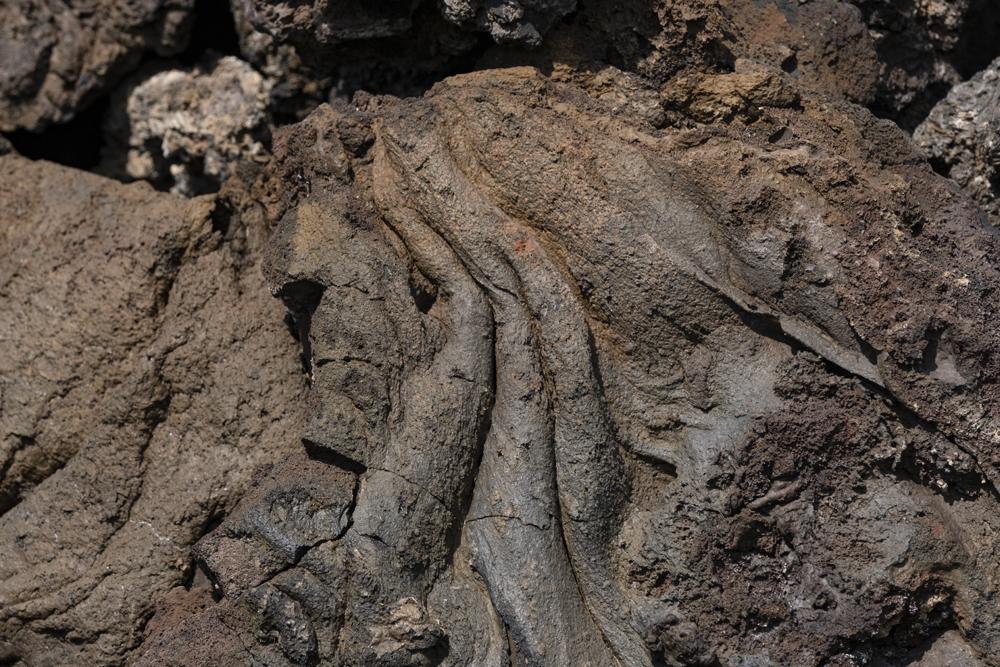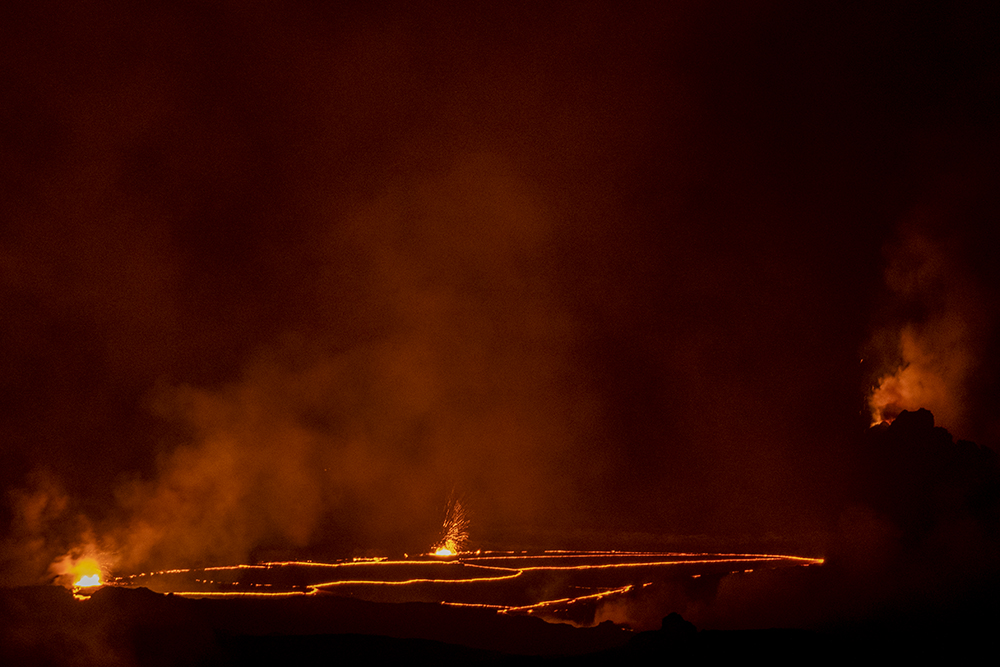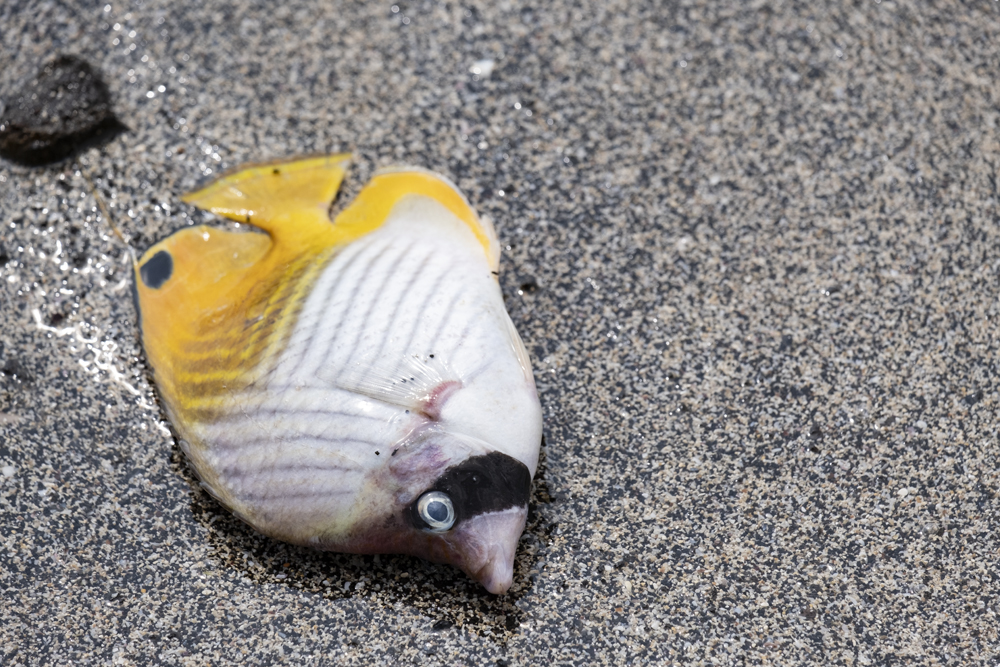In the middle of the Pacific Ocean, islands of fire sit together surrounded by turquoise blue seas. They are beautiful and at times dramatic but they hide another story, one which is perhaps a microcosm of the future our planet faces in the now near future.
For your average visitor to Hawai’i’s Big Island, active volcanoes and intriguing marine life are a big pull and no holiday would be complete without both. However, look a little closer and it quickly becomes evident that there are problems, big problems on the horizon.






Kilaeua, this island’s only currently active volcanic crater, will carry on bubbling and sometimes erupting, as the volcanoes of this small island chain have done for thousands of years. The last big eruption was in 2018 when the Kilaeua crater dropped by about 500m (1600 feet) between May and August. It is currently resting not extinct. Steam vents around the crater rim are a reminder that it is very much alive. The heat is palpable even from a distance and a closer look reveals the scorched earth and vegetation around them. Its lava lake bubbles away, looking dormant from a distance in daylight but turning the night sky above the crater orange after dark. One day these Hawaiian gods will speak out loud again and the island’s population will have no choice but to listen.

Old lava flows scar most of the landscape right down to the sea. When I was in Hawaii some 20 years ago the molten lava made the waters boil and hiss as it entered them. For now, the ocean is untroubled but it is here where the problems of man and global warming are all too evident.
In the areas untroubled by the lava flows, rich soil and frequent rainfall produce lush vegetation lush. Through the almost impenetrable rainforest, rivers flow down from the volcanoes creating cascades and waterfalls as they descend to the ocean. The land is fertile, as you imagine, also supporting agriculture and plantations of crops like coffee. Flowers, fruit and vegetables in abundant.





In 2014 the sea water temperature rose significantly. This event started the bleaching of the coral reefs and now many of them are dead and all are dying. Fish stocks are diminishing too as this marine environment damage takes hold.
For the tourists the sea is their playground. They can snorkel, take a boat ride with the chance to see dolphins and maybe the very rare and elusive whale shark. Between December and May whales, predominantly Humpbacks, can been seen in these waters. Some of Big Island’s beaches are home to Green turtles and the now extremely rare Hawksbill turtle. At last count there were about 500 breeding pairs of the Greens but only a handful of the Hawksbills.


Although many of the beaches and surrounding marine environments are protected the problem is one of enforcement. This protection is more in name than in practice. The best known beach for sea turtles is Pahualu’u. It’s a state park where turtles come on to the black volcanic sand to bask and warm up, but it’s only small and it’s a tourist honeypot. During my visit I witnessed people trying to feed the turtles and one moronic woman wading into the water to touch them after taking an undoubtedly awful photograph on a smartphone for her handful of followers on social media. Instagram will no doubt be richer for her actions but the turtles are one step closer to being no more on Hawaii’s Big Island.



There is a sense a frustration amongst marine biologists and those that love our planet and its oceans. Here, between the thirst for the tourist dollar, the big pharma who produce allegedly ‘ocean friendly’ sun creams which actually damage the marine environment (aided by weak politicians who put commerce before environment) and man’s ravenous appetite to keep burning the fossil fuels which are heating and destroying our climate, it is easy to become despondent. The scientific community have been warning us about climate change and global warming for a long time, but most of the planet still isn’t listening, while others tinker around the edges for political expediency.

If evidence is needed that global warming is actually happening right now to change minds then a trip to a secluded bay on a tourist boat is all you need. A once beautiful and pristine seabed is now a coral graveyard and the marine life is following. It is in our power to change things and stop this destruction but the pitiful manipulated targets for greenhouse gas reductions by 2050 won’t achieve that and are already clearly not enough. It’s certainly within our power to protect the marine environments in coastal water which we already have. Recent extreme weather events suggest the planet is fighting back, or at least biting back, but it badly needs our help.
Big Island, and other small island states, are at the forefront of this battle and around the world sea level rises are already threatening the very existence of some. Their voices get drowned out at global decision making events like COP. We need to listen, but places like Hawaii need to be far active in protecting themselves too!



With a tourist hat on, it isn’t hard to see why the turtles are a draw. What is unfathomable is why human being are so incredibly unintelligent when they go to see them. Why do people need to touch them? Why do they need to invade their space? The turtles clearly aren’t comfortable with either. There is a sense now that they are simply a photo opportunity not incredible creatures which need our help to survive.
As the tourist buses arrive, people queue up on the beach to get their photo, many with just a phone and just an Instagram opportunity. It feels more like trophy hunting than marvelling at these incredible marine reptiles and it’s very sad to see. A small area on the black sand beach is marked off with igneous rocks to allow the turtles to come ashore to bask and warm up, and at the right time of year, to nest. But it is small. Again it comes back to management of the domains which they inhabit. With all the many beaches on Hawai’i surely it would be possible to close ecologically important ones like this for all but a few hours a day to allow the turtles freedom to use it without being disturbed or harassed by visitors?




My soul came alive again with a visit to a small cove which is home, if the tidal flows are right, to the mesmerising manta ray. Here, at least, I got a sense that there is a degree of management of this environment. Too many boats went to see them – 12 small ones by my count – but the one I was on was at least run by people who care and control the idiot tourists, pulling them out of the water if needs be – and this at least hints at being managed for the protection of this marine life.
Limited to 30 to 40 minutes in the water with these incredible gentle giants will remain one of the highlights of my life. To see them you snorkel to surf boards with handles on and a light beneath, then lying flat on the surface, view them feeding below. They are night feeders, with a diet of plankton which catches the light like snow in a snow globe as it drifts suspended in the water.




With wingspans from three to four and a half metres (nine to 14 feet), the manta rays silently glide through the water. Looking below the surface for the first time to see one clear as day swim by right beneath you makes your heart sing. Then when one loops the loops over and over again, feeding only inches from you, it isn’t possible to feel anything other than awe and wonderment. If you don’t, you must have already checked out on everything that makes it worth sharing this planet.
At one point there were five, maybe six, of these majestic beings beneath me ghosting in from every compass point. It was so incredible to see that I almost forgot to breathe. In the water the refraction makes distance difficult to judge but they were so close that I was expecting to feel them brush past at any moment. Occasionally they do. Precision swimming in slow motion on their part.



Leaving Hawai’i, I’m left with a distinct feeling that our planet needs our help more than ever, and now, not tomorrow. It would be naive of me to think that I’m not part of the problem. I am, not least because I’ve flown half way around the world to experience it. Mine, like everyone else’s, is a carbon footprint which needs to change. My one saving grace is that my words and pictures, provided they’re good enough, might change or add to the awareness of other. This aside, there is so much that could be done immediately and much at little cost other than educating mankind to share the planet with and respect nature. Let’s start now!

